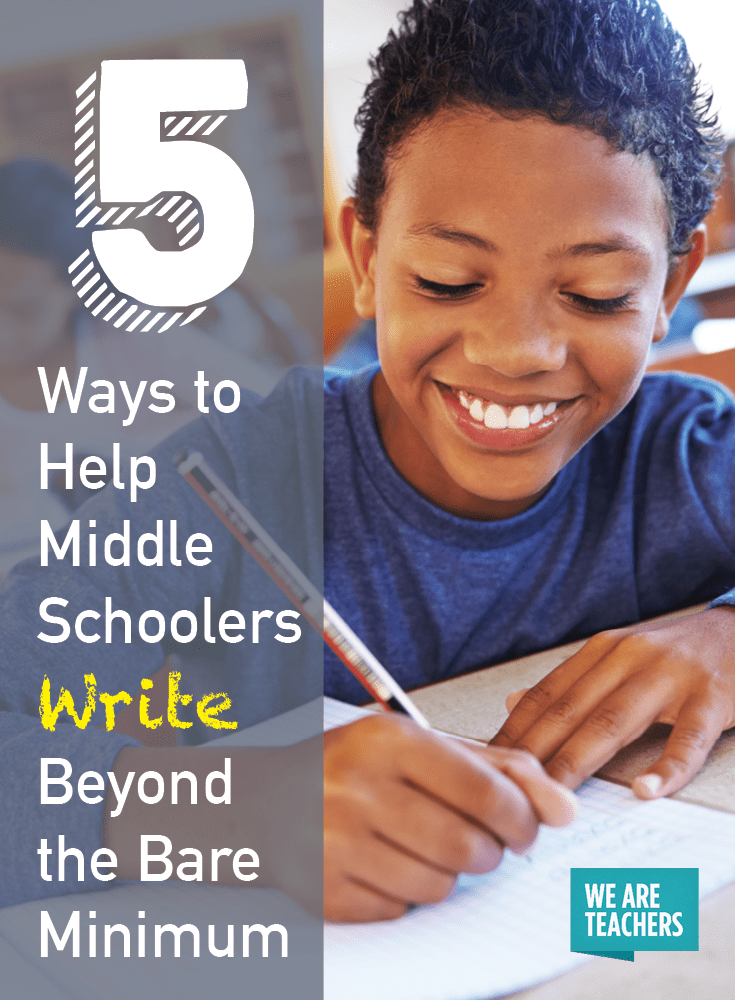Teaching writing is not for the faint of heart—especially in middle school! By this age, it’s harder to trick students into thinking writing is fun, and that eagerness to please grown ups may be ancient history. For many students, there is no amount of cajoling, pleading, or threatening that will produce a response other than, “I don’t know what to write.” They seem to want to write the minimum word count and move on to the next task at hand.
It doesn’t have to be this way, though. There are ways to help kids slay the writing dragon while maintaining peace in your kingdom. Er, I mean, classroom.
1. Offer (lots of) word lists and graphic organizers.
This might seem obvious because we all know these supports make writing more accessible for students. But I’ve been in the classroom, and I know they aren’t used often enough. We need to do this as teachers, though. It’s our job to provide students with a battle plan (because writing is a battle for many kids). There are so many graphic organizers out there, and I recommend trying a few different ones to see what your students like. You also want to make word lists easily accessible. Don’t focus on big or fancy words. Instead, concentrate on offering alternatives to “dead” words like very, a lot, great, etc.
2. Embrace mentor texts.
This is a great way to spur reluctant writers into action because they aren’t starting with a blank slate. Mentor texts are a student’s armor as they attempt more sophisticated compositions, protecting students by giving them a guide to good writing while still requiring them to be creative and use their own words. Over the years I’ve used many mentor texts. One of my favorites is the first vignette from The House on Mango Street by Sandra Cisneros. The vignette holds the same title as the book itself, and it describes the different places the main character has lived in her life. Students can model their own writing after Cisneros’ vignette by describing the places they have lived and the people they’ve known in those places along the way.
3. Let the diversity of authors inspire your students.
4. Incorporate current events.
Middle school students have lots of opinions, but they often don’t watch the news or get their information from reliable sources. Providing students with a current event article, pairing it with a video, (or song lyrics, or poem, or chapter from a novel or memoir) and then asking them to put down their thoughts really inspire some passionate writing. Current events texts can be paired with nearly any fictitious work to build students’ background knowledge, widen their world view, and yes, nudge them into broadening and deepening their writing lives.
5. Let them choose the adventure.
I know it’s not always possible to let students choose the type of writing they want to do, but when possible, it’s important to let them express themselves. This will definitely help them take ownership of their own work. Think about offering a menu so they have choices—for instance give options such as writing a poem, a chapter in their own memoir, song lyrics, a fictional short story, or even an informative nonfiction article using research (for your fact-loving students!). This will help students see that there are many ways to relate what they know.
Writing is hard, and for many students it can seem like an impossible feat that will never be conquered. However, having your own teacher arsenal of writing strategies and tools will help you lead your mighty army of authors to victory, time and time again. Now, go forth, and WRITE!


